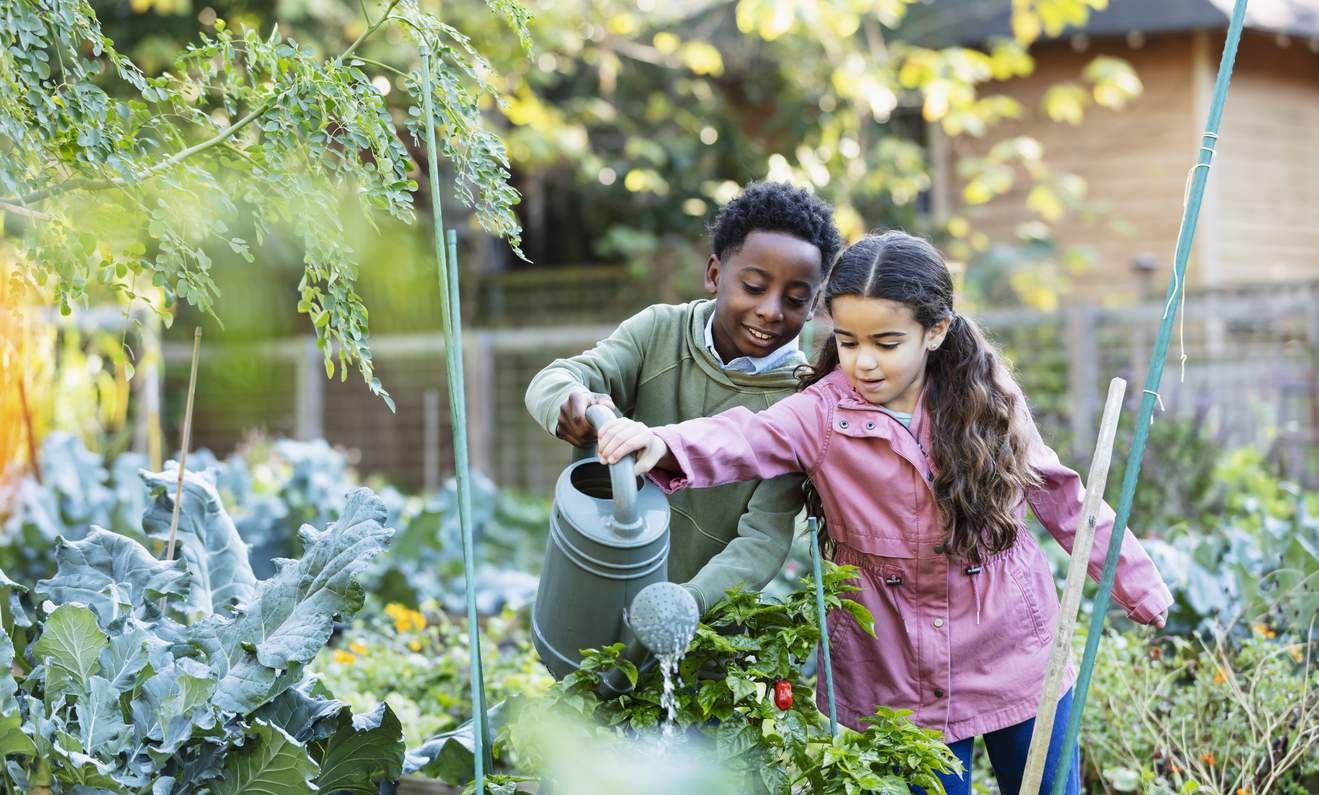The Sunshine State’s weather is the topic of many jokes and stories because of how indecisive its rain schedule is, its blazing heat year-round, and its unforgiving hurricanes.
But as a homeowner in Florida, it can be challenging to fill your yard with plants because harsh heat and inconsistent rain may harm your garden babies.
Luckily, there are many low-maintenance plants for Florida to choose from. These plants generally share qualities that allow them to survive the severe weather without rigorous care.
Key Qualities of Florida’s Low-Maintenance Plants
The best outdoor plants for Florida share many of the characteristics below, making them easy to care for.
- Ability to withstand heavy rain: Despite the sun, Florida’s rain is often nonstop from summer to fall (June to October). A good low-maintenance plant can survive in waterlogged soil.
- Drought-tolerant: Florida gets its fair share of rain, but it also experiences droughts. Drought-tolerant plants in Florida can survive or thrive without constant water.
- Heat-tolerant: You don’t need us to tell you how hot Florida gets, but your plants might get a rude awakening if they’re not adapted for high heat.
- Comfortable in sandy soil: If you plan to put your plants in the ground, they should be comfortable taking root in Florida’s mostly sandy soil.
- Salt-tolerant: Especially along the coasts, Florida soil has a higher salinity level that dries out maladapted plants. Salt-tolerant plants avoid wilting and stunted growth.
- Wind-resistant: Florida’s yearly storms and potential hurricanes bring strong winds that test a plant’s sturdiness. Wind-resistant plants are less likely to snap, fall, or lose branches in high winds.
Considerations Before Planting
Knowing the conditions of your Florida yard will help you make a more intentional purchase when looking over a plant’s preferences at the nursery.
If you have a good idea of your yard’s conditions, you will also be better prepared to come up with low-maintenance Florida landscaping ideas.
Before adopting any leafy friends, better understand your home’s outdoor environment with the considerations below.
- Lighting and shade in your yard: Note how much sunlight each section of your yard gets throughout the day to guide you on where to plant different species based on their needs.
- Access to water: Determine whether you will water your plants manually or using a sprinkler system. A drought-tolerant plant is suitable if manual watering is too much of a commitment.
- Pesticides: Some pesticides can harm pollinators like butterflies and bees, which are necessary for some plants to bloom and reproduce. Ensure any pesticides used in your yard are organic, which includes those made of soap or that are oil-based pesticides.
- Size of your yard: Some plants grow to unexpected heights and widths at maturity, so make sure you have enough room in your garden or on your patio for any in-ground or potted plants chosen.
- Pets: If you have any pets roaming your backyard, ensure they can’t access toxic plants in your yard, or avoid buying these species altogether. The ASPCA has a comprehensive list of toxic and non-toxic plants for cats and dogs.
- Invasive plants in your yard: Find out if any current in-ground plants are invasive. These species can steal nutrients and space from any new plants you add.
A Note on Hardiness Zones
Another consideration is which hardiness zone you live in. The United States Department of Agriculture categorizes the country’s regions into plant hardiness zones based on the area’s average lowest winter temperatures.
These zones indicate habitable areas for plants that cannot survive below certain temperatures in the winter. Most of north and central Florida are in zones 8b to 9b, while most of south Florida is in zones 10a and 10b.
After determining which hardiness zone you live in, you can check if a plant thrives best in your hardiness zone by searching for it in this guide.
Choosing a Plant: Native vs. Non-Native
When choosing low-maintenance plants for Florida, native plants are better than non-native plants. Native Florida plants have adapted to living in the state’s harsh climate. They will always live longer and can stand or even need the state’s hot temperatures.
Native plants don’t need fertilizer, much watering, or as many pesticides because your yard most likely is a sample of Florida’s natural conditions.
Choosing native Florida landscape plants also helps with xeriscaping, a type of landscaping that favors low-maintenance plants in your yard to reduce water waste.
If you do choose non-native plants for your yard, pick one from the list below or pick one that shares the same key qualities we listed earlier. As long as your non-native plant isn’t an invasive species, which overtakes the habitats of native species, your yard can benefit.
20 Great Florida Low-Maintenance Plants
Now that we’ve nurtured you with the knowledge of what a low-maintenance plant is and how to pick one out, let’s look at some of the top options.
For your convenience, we indicate whether or not these plants are toxic if pets ingest parts of the plant. Avoid toxic plants for your yard if you have pets.
Remember that while these are low-maintenance outdoor plants for Florida, they still require a basic level of care and may not be suitable for your yard.
1. Muhly Grass (Muhlenbergia capillaris)
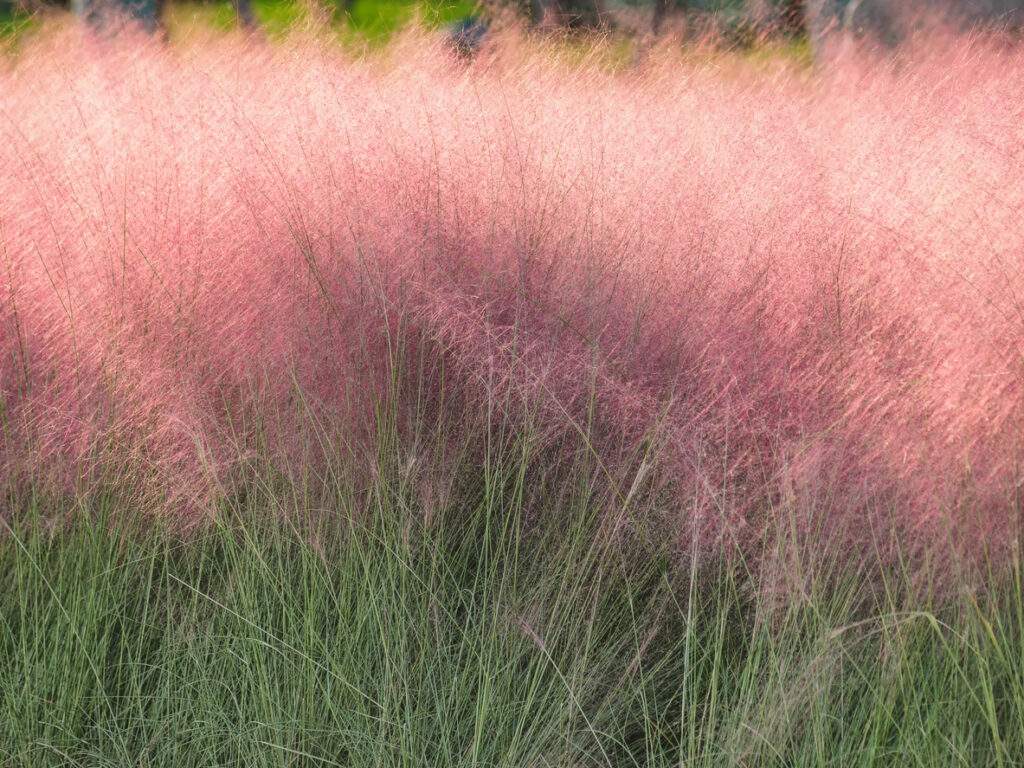
- Care instructions: Plant in full sun. Water consistently when its soil is dry until it’s established, making sure not to overwater. After that, it’s drought-tolerant.
- Toxicity for Pets: Non-toxic
- Native: Yes
- Unique Traits: fuzzy purple or pink flower stalks
2. Nemesia (Nemesia caerulea)
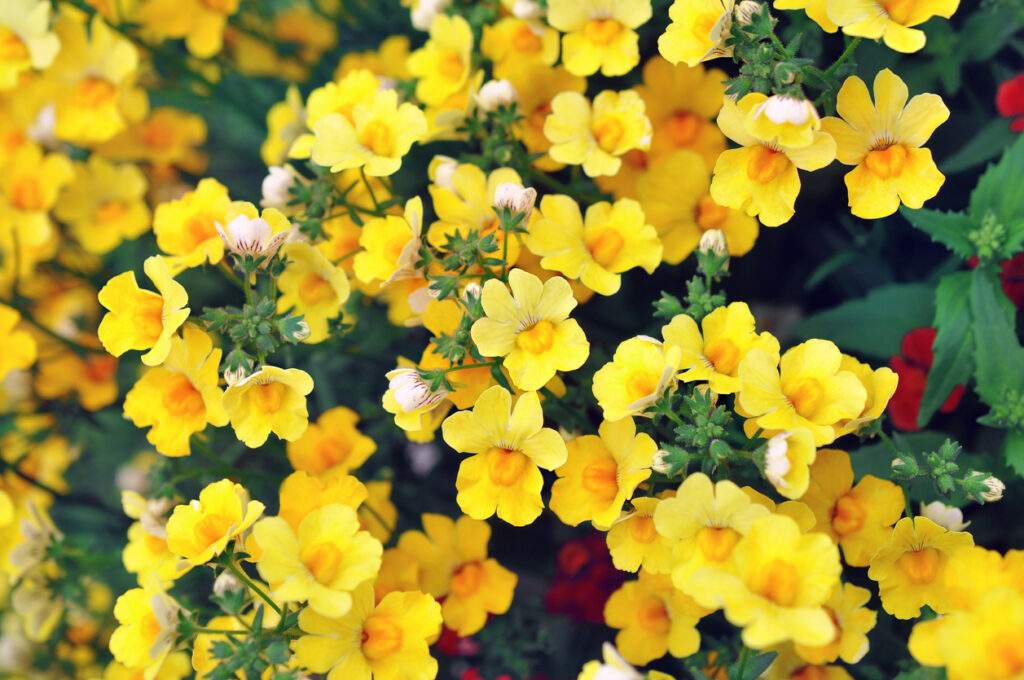
- Care instructions: Plant in full sun or in an area with a few hours of partial shade, and keep its soil moist but not soggy. Use a slow-release fertilizer, which comes in small pellets, to encourage growth in the spring. Clip off diseased or damaged flowers after they’ve fully bloomed to promote new blooms.
- Toxicity for Pets: Non-toxic
- Native: No
- Unique Traits: recognizable purple flowers that grow in two sections with a yellow center
3. Beautyberry (Callicarpa)
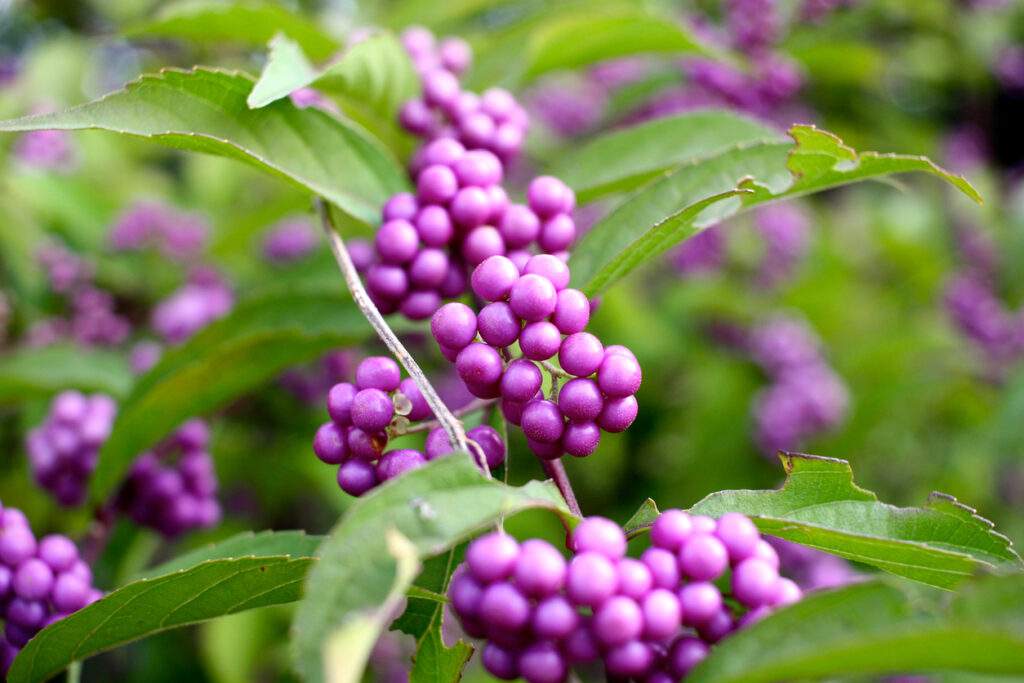
- Care instructions: Plant this shrub in well-drained sandy soil in an area with full to partial sun. This plant is drought-tolerant and can survive dry or moist soil. Prune in the winter to encourage denser growth.
- Toxicity for Pets: Non-toxic
- Native: Yes
- Unique Traits: grows quickly and produces clusters of vibrant purple berries
4. Crape Myrtle (Lagerstroemia)
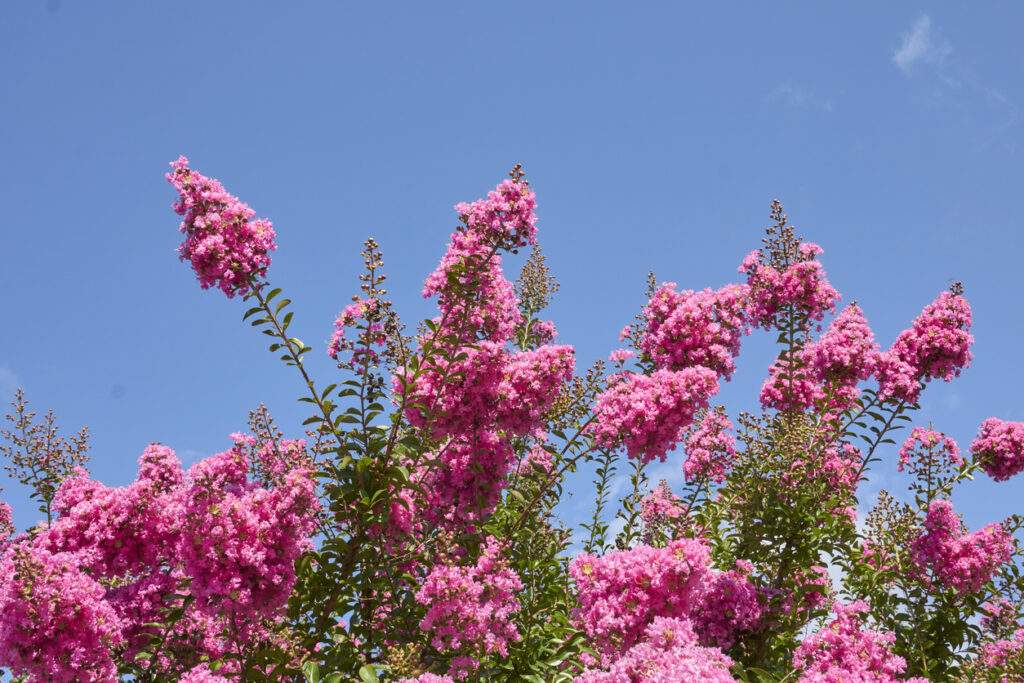
- Care instructions: Plant these plants in full sun for vibrant colors and blossoms. Ensure the soil is well-draining to prevent root rot. Sparingly apply a slow-release fertilizer to increase the vibrancy of flowers, but applying too much can overgrow its leaves.
- Toxicity for Pets: Non-toxic
- Native: No
- Unique Traits: fluffy clusters of flowers that resemble purple, pink, white, and reddish tissue paper
5. Saw palmetto (Serenoa repens)
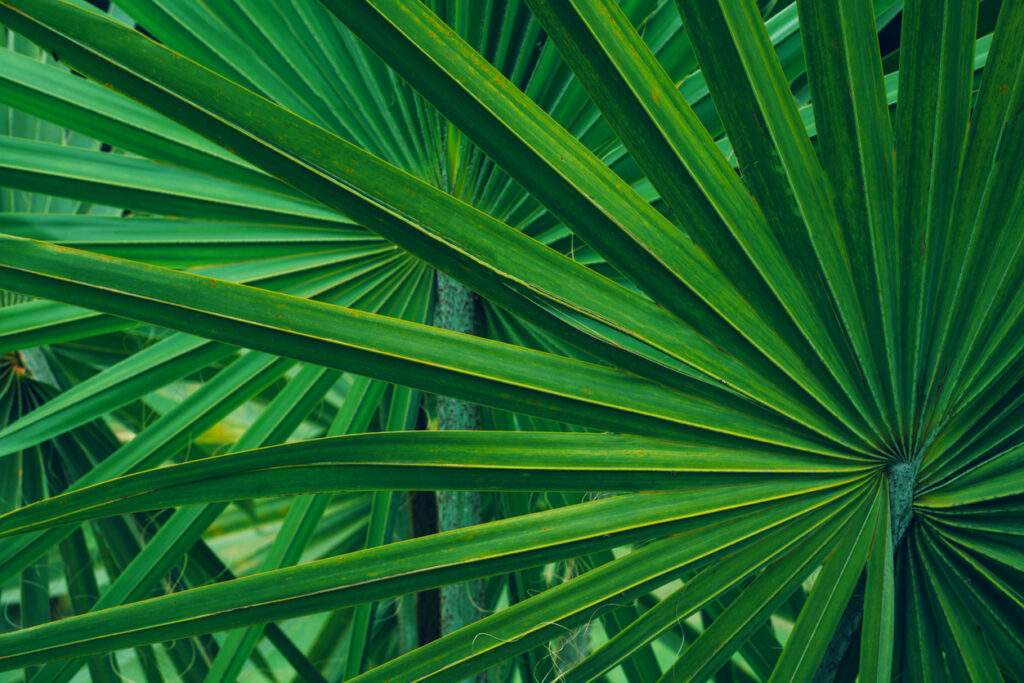
- Care instructions: These palms like full sun but can grow in any light conditions. Give it ample room to grow, as they can reach four to 10 feet wide. They need regular watering initially, but they will be drought-tolerant once established. Trim dead fronds, fruit stems, and flowers from the plant.
- Toxicity for Pets: Non-toxic
- Native: Yes
- Unique Traits: large, fan-like fronds and brown fruit that have medicinal benefits
6. Sedum
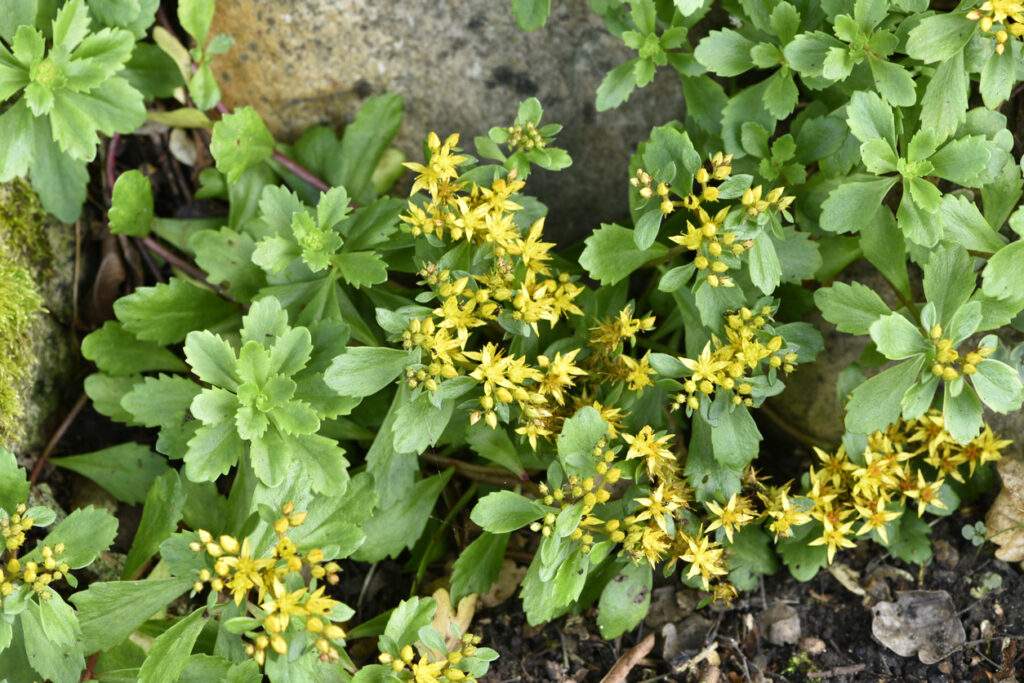
- Care instructions: Most sedum species will grow well in part shade or full sun. They like well-drained soil that can be nutrient-poor and sandy. Water only when the soil is dry.
- Toxicity for Pets: Non-toxic
- Native: No
- Unique Traits: is a succulent with small leaves that grow in green, red, variegated, or gray
7. Rosemary (Salvia rosmarinus)
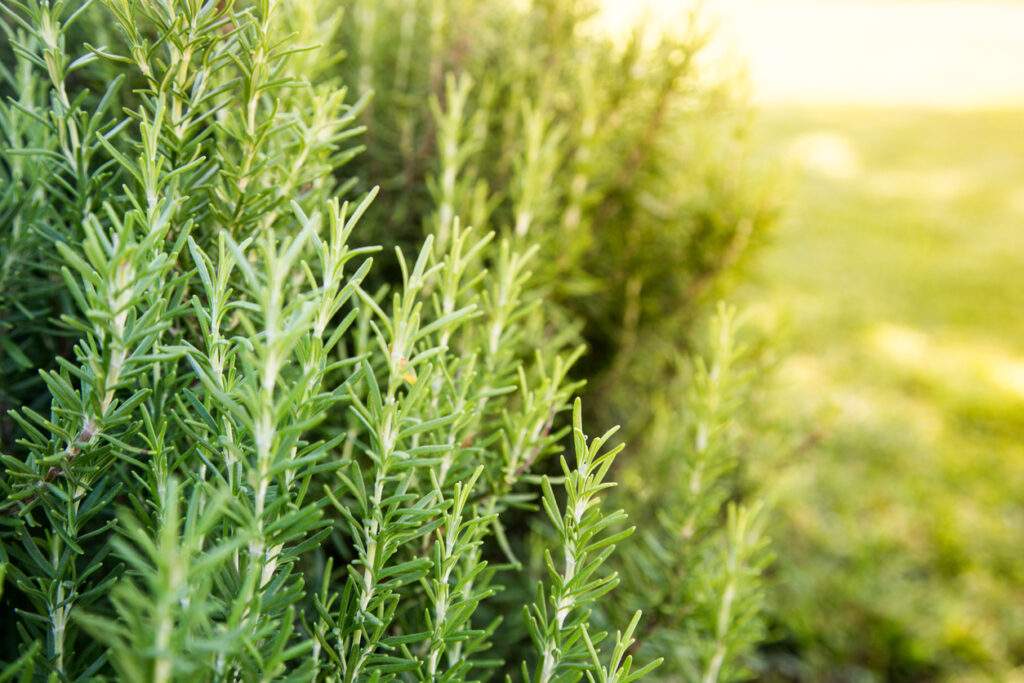
- Care instructions: Rosemary likes full sun and well-drained, sandy soil. You can water rosemary thoroughly when it is dry, but allow it to dry fully again before rewatering.
- Toxicity for Pets: Non-toxic
- Native: No
- Unique Traits: aromatic needles used as an herb for cooking and purple flowers
8. Bismarck Palm (Bismarckia)
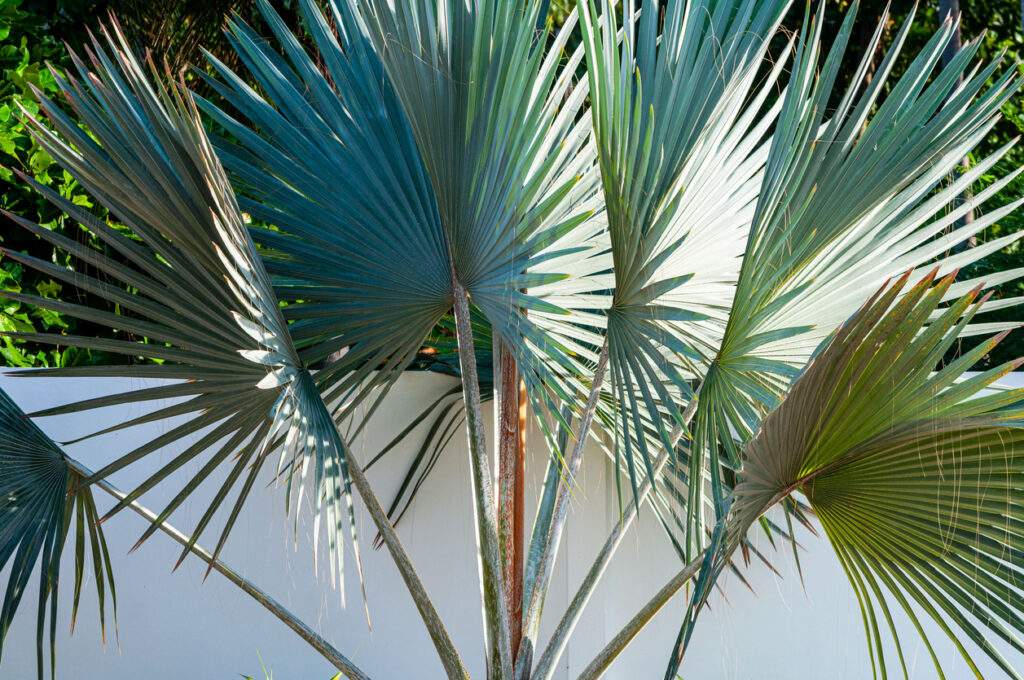
- Care instructions: This palm does best in full or partial sun and well-drained soil with regular watering. However, it is salt- and drought-tolerant once established.
- Toxicity for Pets: Non-toxic
- Native: No
- Unique Traits: can grow up to 60 feet tall and 16 feet wide with enormous silvery-green fronds
9. Bougainvillea
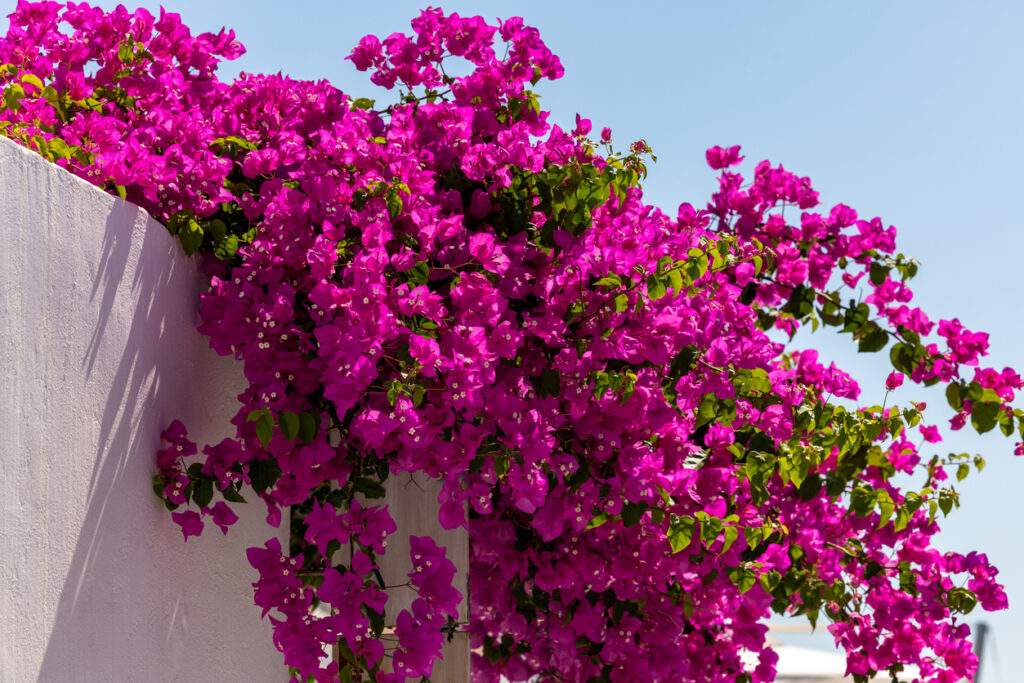
- Care instructions: These plants prefer dry soil and full sun, but you can water them deeply every three to four weeks.
- Toxicity for Pets: Non-toxic
- Native: No
- Unique Traits: grows as a vine, bush, or tree and has small white flowers within a cluster of pink, purple, red, orange, white, or yellow leaves
10. Regina Iris (Neomarica caerulea)
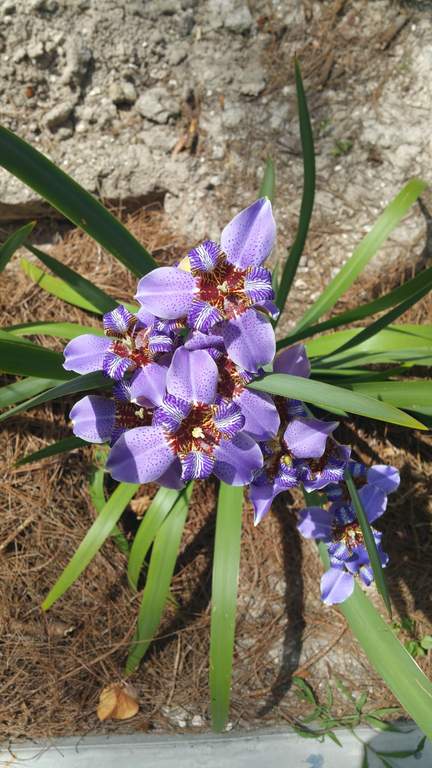
- Care instructions: This iris likes full sun or partial shade and is drought-, salt-, and heat-tolerant. For best results, water regularly for moist soil.
- Toxicity for Pets: Toxic
- Native: No
- Unique Traits: gorgeous purple flowers with dark stripes and yellow accents
11. Juniper (Juniperus)
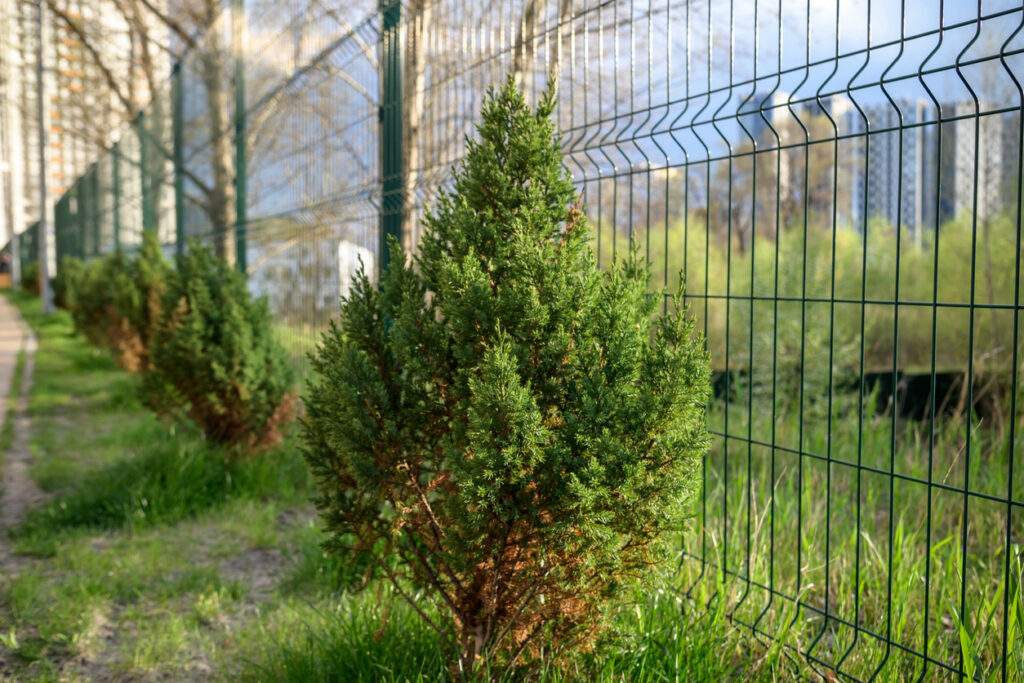
- Care instructions: These trees or shrubs enjoy full sun and well-drained soil. They are salt-tolerant and only require watering two to three times a week for the first two weeks. After that, don’t allow their soil to remain too wet.
- Toxicity for Pets: Toxic
- Native: Only Juniperus virginiana
- Unique Traits: an evergreen plant with needle-like leaves, fleshy cones, and blue berries
12. Yucca* (Yucca)
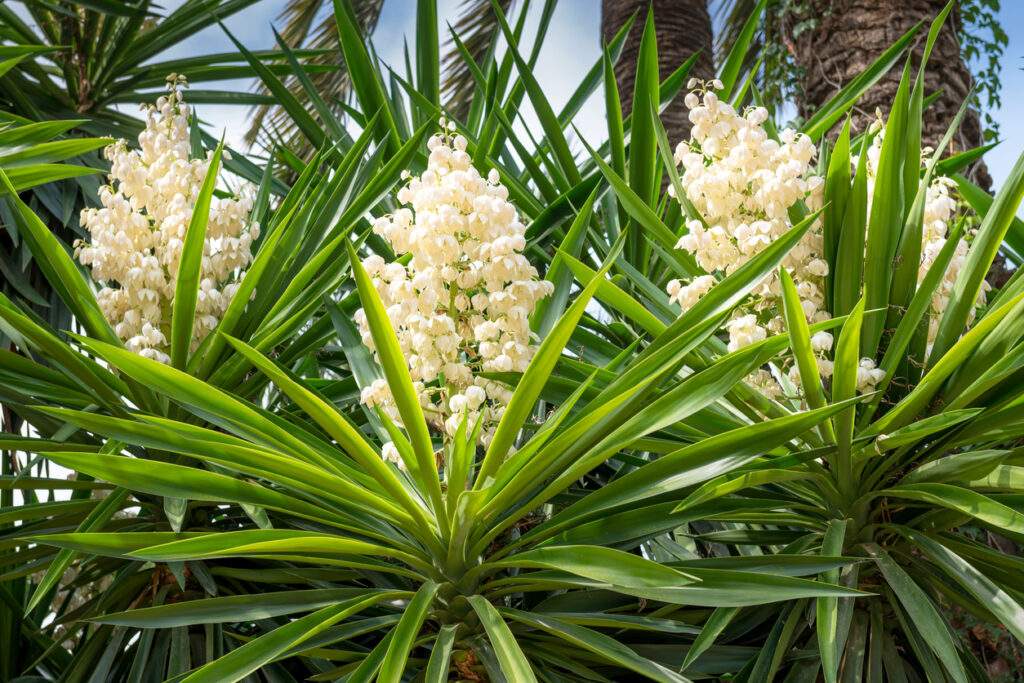
- Care instructions: These plants are drought-tolerant but can benefit from a weekly watering of about one inch during hotter months. If you plant them in the ground, they need full sun and lots of room.
- Toxicity for Pets: Toxic
- Native: Yes
- Unique Traits: narrow, sharp leaves that form rosettes and white or cream flowers that form on tall stalks
*Not to be confused with the edible yuca plant or cassava (Manihot esulenta).
13. Aloe (Aloe vera)
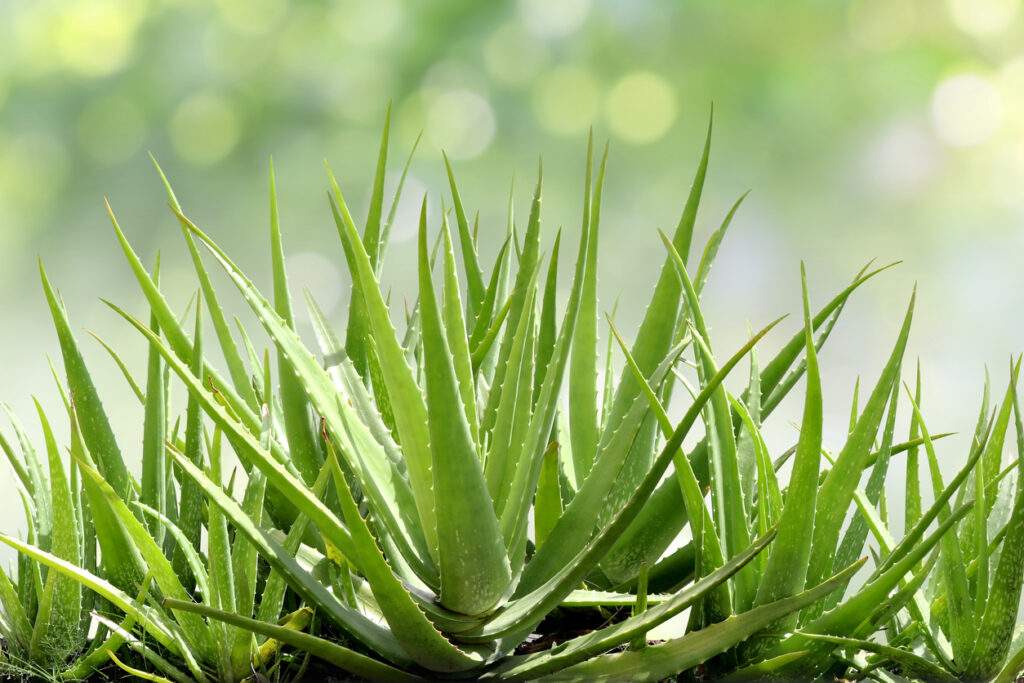
- Care instructions: As succulents, aloe plants only need watering when their soil is dry. To avoid drying it out completely, place this plant in an area with bright, indirect sunlight.
- Toxicity for Pets: Toxic
- Native: No
- Unique Traits: fleshy, thick leaves filled with a gel that can alleviate burns and sunburns
14. Azalea (Rhododendron)
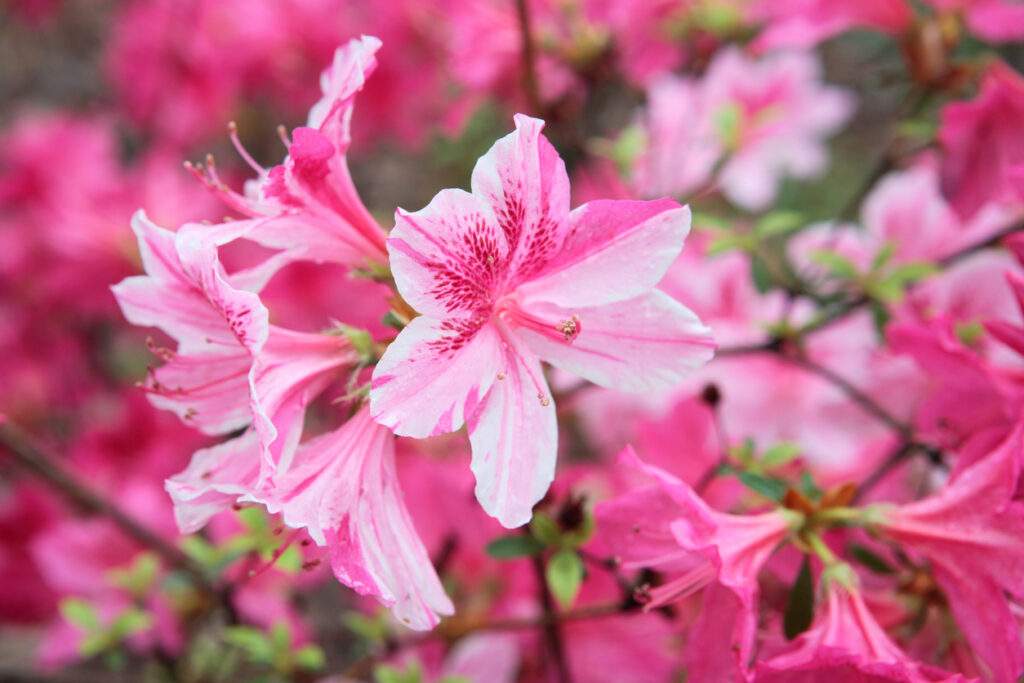
- Care instructions: Choose species of azaleas that tolerate direct sunlight. Keep this shrub’s soil moist, but don’t overwater.
- Toxicity for Pets: Toxic
- Native: No, except for endangered Rhododendron chapmanii
- Unique Traits: flowering shrub with a range of colors
15. Bird of Paradise (Strelitzia)
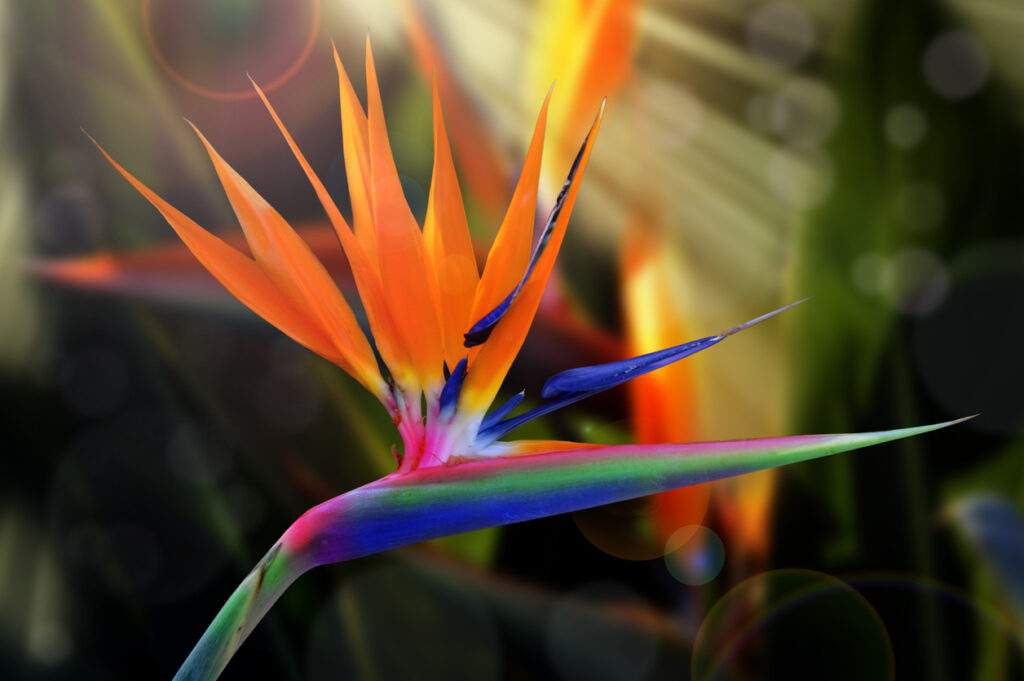
- Care instructions: These elaborate plants do well in full sun and are not suitable for areas of full shade. Because its large leaves lose a lot of moisture, water this plant twice a week during hotter months.
- Toxicity for Pets: Toxic
- Native: No
- Unique Traits: large orange and violet flowers that resemble a tropical bird
16. Variegated Croton (Codiaeum variegatum)
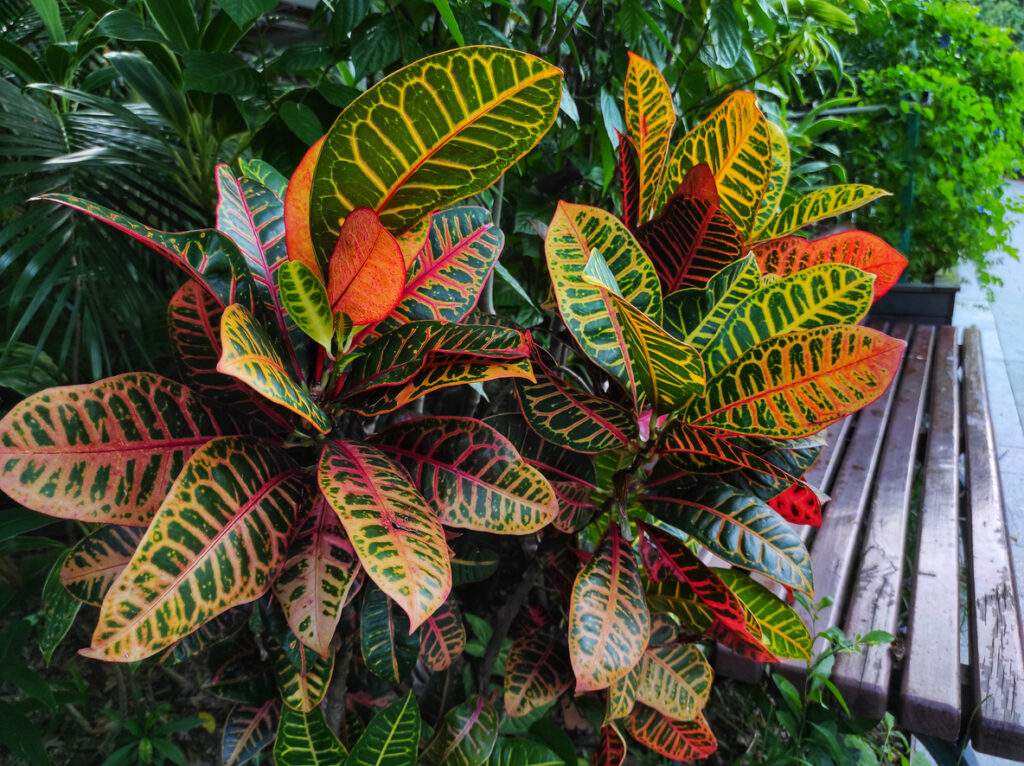
- Care instructions: This plant likes indirect or direct sunlight. Water when its soil is dry, and ensure its environment is humid.
- Toxicity for Pets: Toxic
- Native: No
- Unique Traits: variegated leaves that are speckled and striped with green, red, and yellow
17. Bromeliad (Bromeliaceae)
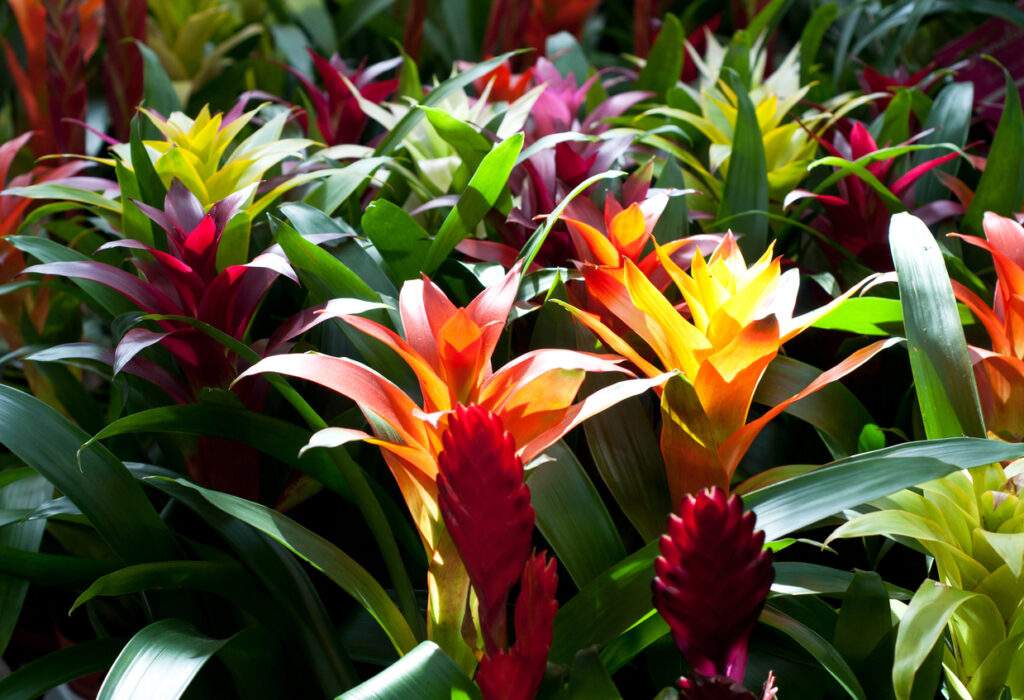
- Care instructions: These plants prefer bright but indirect sunlight and well-drained soil. You can water them in soil or by filling their “tank” if they are growing off of a host plant, as it is an air plant (or epiphyte).
- Toxicity for Pets: Toxic
- Native: Yes
- Unique Traits: grow on other plants and sometimes receive nutrients from dead insects that fall into its water-filled center; red, green, purple, orange, or yellow flowers
18. Bulbine (Bulbine frutescens)
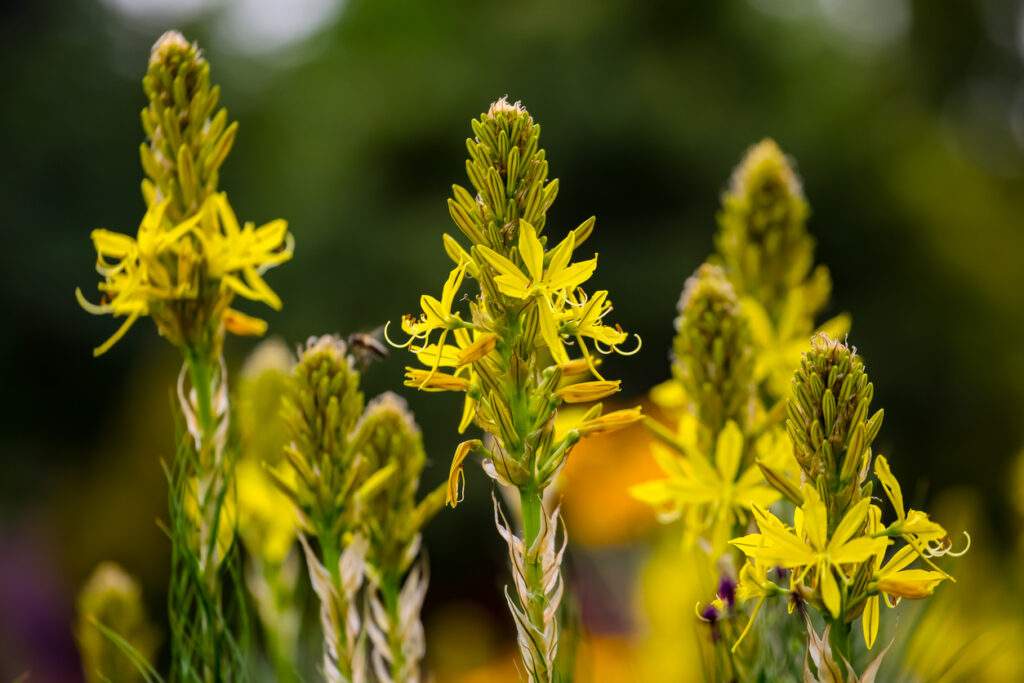
- Care instructions: Water these plants regularly until they’re established, after which they will be drought- and heat-tolerant. It also can tolerate nutrient-poor soil as long as it is well-drained. Remove fading flower clusters to promote growth of new ones.
- Toxicity for Pets: Toxic
- Native: No
- Unique Traits: clusters of orange star-shaped flowers
19. Cocoplum (Chrysobalanus icaco)
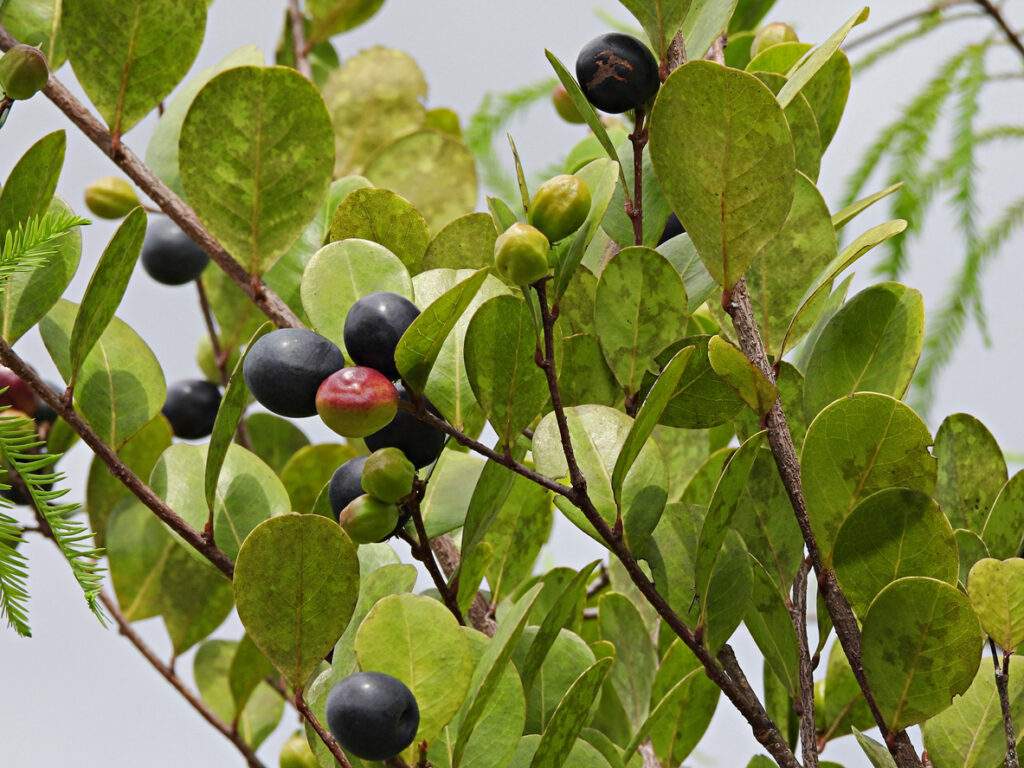
- Care instructions: These bushes will grow in full sun or partial shade and are salt- and wind-tolerant. Water them regularly for the first five to seven months until they are established, after which they will need little watering. Space them about four feet apart if you want to create a hedge.
- Toxicity for Pets: Toxic
- Native: Yes
- Unique Traits: edible purple fruits and green, red-tipped leaves
20. Dune Sunflower (Helianthus debilis)
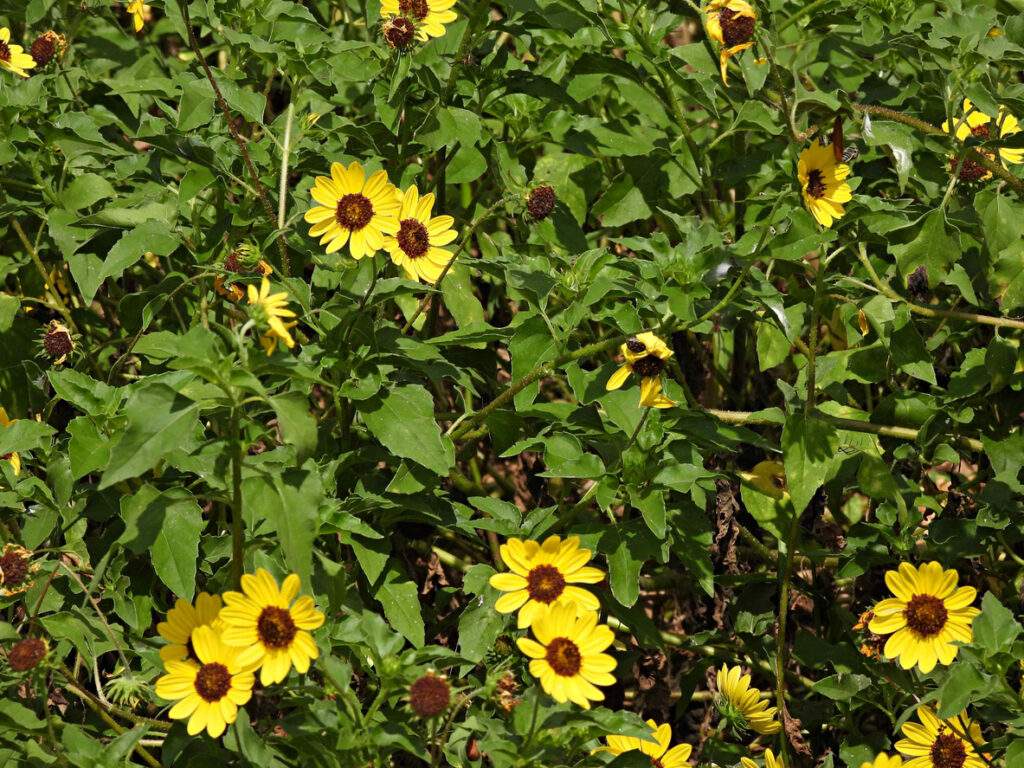
- Care instructions: This plant will thrive in sandy, well-drained soil and full sun. Dune sunflowers are drought- and salt-tolerant, and you should not overwater them.
- Toxicity for Pets: Toxic
- Native: Yes
- Unique Traits: yellow flower resembling a small common sunflower on a ground cover plant
Build Your Personal Paradise
Your Florida garden will teem with life if you choose the right plants.
Plants that have drought and heat tolerance will end the days of sun-scorched leaves and wilting petals. If you live near the coasts, wind- and salt-tolerant plants will fare well in your yard.
And if your low-maintenance plants start to die on you, give yourself some slack. Gardening and landscaping in Florida can be challenging. Take another look at your yard’s environment and determine what went wrong. It could be that you picked the wrong low-maintenance plants for your yard—or it could just be bad luck.
If your plants do die, you can always try to revive them or try anew.
